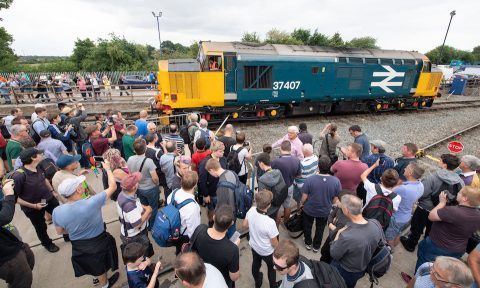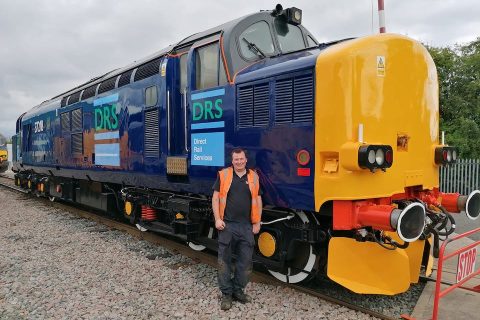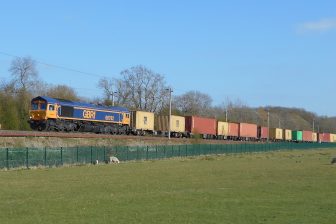
UK Direct Rail Services class 37 auction hammer about to drop
They’re not ready to retire yet. Time is running out for potential commercial operators or even preservationists to participate in the Direct Rail Services (DRS) sale of three class 37 locomotives. With just one week remaining, these locomotives, which have served the rail industry for over 60 years, are up for grabs, attracting significant interest and demand. Affectionately known throughout the industry as “tractors”, the noisy diesels can still be found in revenue-earning services around the UK.
DRS, one of the UK’s leading national rail freight operators, is offering three class 37 locomotives for sale as part of its ongoing modernisation. The locomotives available for bidding are numbered 37069, 37402, and 37423. This sale marks another chapter in DRS’s commitment to lower carbon locomotives and ambitious fleet modernisation plans, aligning with the industry’s push for sustainability. The class 37 marque was once a cutting-edge design introduced as part of an earlier modernisation plan for the railways in Britain.
Ridiculously long-lived
To ensure a fair and transparent process, the sale is being conducted through the Atamis e-Procurement system – a UK-developed software package used extensively in many business sectors. With the deadline set for 13:00 hours UK on 7 July 2023, prospective buyers have limited time to submit their bids and potentially become the new owners of these ridiculously long-lived locomotives. Having proven themselves on everything from sleeper services to bulk timber trains, there is no question of the locomotive marque’s versatility.

The class 37 locomotives hold a rich history within the British rail industry. Originally ordered as part of what was the British Railways modernisation plan, these diesel-electric locomotives, also known as the English Electric Type 3, were instrumental in revolutionising rail transport. Incredibly, production began while the nationalised British Railways was still taking delivery of steam locomotives. The production run was divided into two series, originally numbered D6600–D6608 and D6700–D6999. The “D” prefix signifying diesel traction. A total of 309 units were built, divided between two suppliers, between 1959 and 1964.
Enduring performance
Over the decades, the class 37 became a familiar sight across the British Rail network. They served as the primary motive power for InterCity services in East Anglia and Scotland, demonstrating their reliability and versatility. These locomotives also excelled in secondary and inter-regional services, proving their adaptability in various operational scenarios. Today, many class 37 locomotives continue to serve on freight, maintenance, and empty stock movement duties, showcasing their enduring performance.

Carlisle headquartered Direct Rail Services has been engaged in a comprehensive modernisation programme of its own, which has seen the operator introduce some of the most advanced locomotives on the UK network. That’s an accolade that the class 37 cannot reasonably claim any longer. Even though the class was once charged with hauling the unique DRS nuclear flask traffic, it has since been demoted from that role. DRS was set up in 1995, specifically to serve the nuclear industry. It still operates as a wholly owned subsidiary of the UK Nuclear Decommissioning Authority (NDA). In 2021, the business was restructured under a new parent, Nuclear Transport Solutions, to help broaden the commercial operating base as a full service freight operator.
In a little over a week, as the bidding deadline approaches, these three historically significant locomotives could be broadening their own commercial operating base. Then again, they might go for spares.



